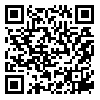Volume 8, Issue 2 (20 2012)
irje 2012, 8(2): 20-28 |
Back to browse issues page
Download citation:
BibTeX | RIS | EndNote | Medlars | ProCite | Reference Manager | RefWorks
Send citation to:



BibTeX | RIS | EndNote | Medlars | ProCite | Reference Manager | RefWorks
Send citation to:
Cheharazi M, Shamsipour M, Norouzi M, Jafari F, Ramazan Ali F. A New Method for Correcting Verification Bias in Diagnostic Accuracy Studies Using A Bayesian Approach. irje 2012; 8 (2) :20-28
URL: http://irje.tums.ac.ir/article-1-5-en.html
URL: http://irje.tums.ac.ir/article-1-5-en.html
1- , shamsman87@yahoo.com
Abstract: (12917 Views)
Background & Objectives: One of the problems of diagnostic accuracy studies is
verification bias. It occurs when standard test performed only for
non-representative subsample of study subjects that diagnostic test done for
them. In this study we extend a Bayesian method to correct this bias.
Methods: Patients that have had at least twice repeated failures in cycles IVF ICSI were included in this model. Patients were screened by using an ultrasonography and those with polyps recommended for hysteroscopy. A logistic regression with binomial outcome fit to predict the missing values (false and true negative), sensitivity and specificity. Bayesian methods was applied with informative prior on polyp prevalence. False and true negatives were estimated in Bayesian framework.
Results: A total of 238 patients were screened and 47 had polyps. Those with polyps are strongly recommended to undergo hysteroscopy, 47/47 decided to have a hysteroscopy and 37/47 were confirmed to have polyps. None of the 191 patients with no polyps in ultrasonography had hysteroscopy. The false negative was obtained 14 and true negative 177, so sensitivity and specificity was estimated easily after estimating missing data. Sensitivity and specificity were equal to 74% and 94% respectively.
Conclusion: Bayesian analyses with informative prior seem to be powerful tools in simulation experimental
Methods: Patients that have had at least twice repeated failures in cycles IVF ICSI were included in this model. Patients were screened by using an ultrasonography and those with polyps recommended for hysteroscopy. A logistic regression with binomial outcome fit to predict the missing values (false and true negative), sensitivity and specificity. Bayesian methods was applied with informative prior on polyp prevalence. False and true negatives were estimated in Bayesian framework.
Results: A total of 238 patients were screened and 47 had polyps. Those with polyps are strongly recommended to undergo hysteroscopy, 47/47 decided to have a hysteroscopy and 37/47 were confirmed to have polyps. None of the 191 patients with no polyps in ultrasonography had hysteroscopy. The false negative was obtained 14 and true negative 177, so sensitivity and specificity was estimated easily after estimating missing data. Sensitivity and specificity were equal to 74% and 94% respectively.
Conclusion: Bayesian analyses with informative prior seem to be powerful tools in simulation experimental
Type of Study: Research |
Subject:
General
Received: 2011/07/31 | Accepted: 2012/01/28 | Published: 2013/08/18
Received: 2011/07/31 | Accepted: 2012/01/28 | Published: 2013/08/18
Send email to the article author
| Rights and permissions | |
 |
This work is licensed under a Creative Commons Attribution-NonCommercial 4.0 International License. |





